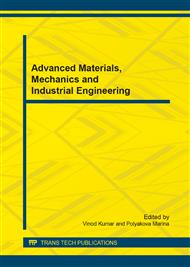p.714
p.718
p.723
p.731
p.736
p.743
p.747
p.753
p.758
Spatial Structure of Land Use Based on Fractal Theory: Taking Shaoguan as an Example
Abstract:
Based on fractal theory, this paper analyzed spatial structure of land use and calculated fractal dimension and stability in Shaoguan. And then the paper revealed the various types of land use spatial differentiation. The results showed that the spatial mosaic structure of woodland patches was the smallest on complexity, but strongest stability. Spatial mosaic structure of urban town rural settlements was smaller on complexity, but stronger stability. Spatial mosaic structure of cultivated land and orchard and grassland and unused land were large on complexity, but poor stability. Spatial mosaic structure of industrial land and transportation and water were larger on complexity, but less stability. The complexity and stability of each land use type spatial mosaic structure was obvious differences. The biggest difference was transportation land, followed by cultivated land, water, grassland, unused land, woodland, urban town rural settlements and orchard, industrial land spatial differentiation minimum.
Info:
Periodical:
Pages:
747-752
Citation:
Online since:
July 2014
Authors:
Keywords:
Price:
Сopyright:
© 2014 Trans Tech Publications Ltd. All Rights Reserved
Share:
Citation:


